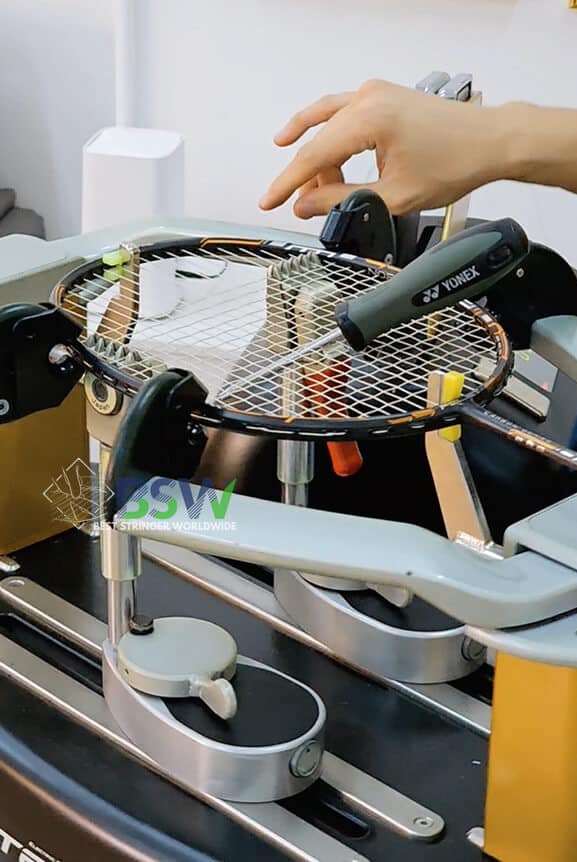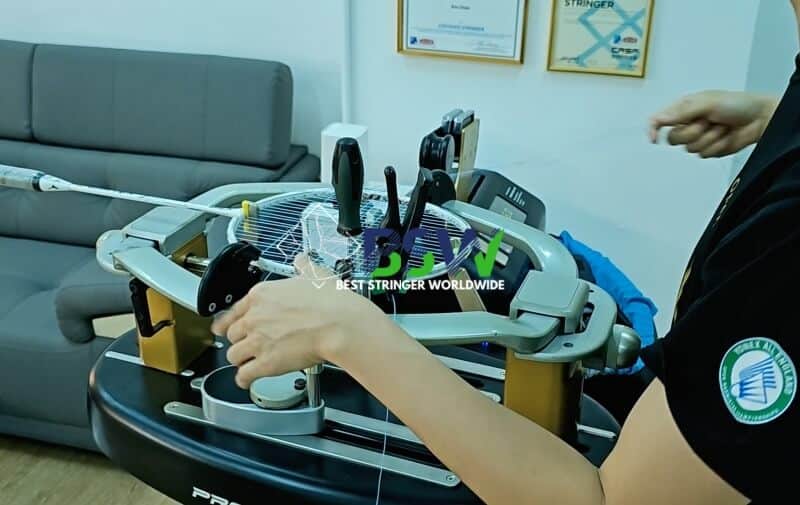Welcome to this comprehensive guide on badminton racquet performance analysis, brought to you by Best Stringer Worldwide (BSW). Understanding the nuances of racquet weight and balance is crucial for players and stringers alike. This knowledge forms a key component of our badminton stringing courses and racquet stringing certification programs.
1. Fundamental Racquet Parameters
The most basic performance parameters of a badminton racquet are its weight (WT), balance point (BP), and length (LH). These factors significantly influence a player’s control, power, and overall performance on the court.

2. Racquet Weight: A Closer Look
Badminton racquets typically weigh between 80-90 grams. Given that players control the racquet primarily with their wrist, even small variations in weight can have a noticeable impact on performance. Professional players often prefer racquets that differ by less than 1 gram.
Explore Racquet Weight Classifications
It’s important to note that some manufacturers use their own weight classification systems. For example, VICTOR uses W1 and W2, corresponding to 2U and 3U respectively. However, the U-based system remains the most common.
3. Weight and Playing Style
The choice of racquet weight often correlates with a player’s style and physical attributes. Let’s explore how different weights might suit various playing styles:
Find Your Ideal Racquet Weight
These suggestions are general guidelines. Individual preferences, physical strength, and playing techniques all play a role in determining the most suitable racquet weight. In our badminton stringing courses, we delve deeper into how racquet weight interacts with string tension and other factors to influence overall performance.
4. The Impact of Weight on Performance
Understanding how racquet weight affects performance is crucial for both players and stringers. Let’s explore the pros and cons of different weight classes:
| Weight Class | Advantages | Disadvantages |
|---|---|---|
| Heavy (1U, 2U) | More power, stability in shots | Slower swing speed, potential fatigue |
| Medium (3U) | Balance of power and control | May lack extreme power or speed |
| Light (4U, 5U) | Faster swings, better maneuverability | Less power in smashes |
In our racquet stringing courses and badminton stringing certification programs, we teach how to optimize racquet performance through proper stringing techniques, taking into account the racquet’s weight and the player’s style.
5. Racquet Balance: Another Crucial Factor
While weight is important, the balance point of a racquet also plays a significant role in its performance characteristics. The balance point is where the racquet balances when placed on a fulcrum. It’s typically measured in millimeters from the butt end of the handle.
Explore Racquet Balance Types
Understanding the interplay between racquet weight and balance is crucial for optimizing performance. In our badminton stringing courses, we explore how these factors influence string tension choices and overall racquet setup.
6. Conclusion: The Importance of Personalization
While understanding racquet weight and balance is crucial, it’s important to remember that personal preference plays a significant role. What works for one player may not work for another. This is why hands-on experience, such as that gained in our racquet stringing courses, is invaluable.
At Best Stringer Worldwide (BSW), our badminton stringing certification program covers these topics in depth, providing students with the knowledge and skills to analyze and optimize racquet performance for players of all levels.
This guide is part of the comprehensive curriculum offered by Best Stringer Worldwide (BSW). Our badminton stringing courses and racquet stringing certification programs cover these topics in greater depth, providing hands-on experience and expert instruction.

About Best Stringer Worldwide
Best Stringer Worldwide is a comprehensive badminton and tennis stringing education program. We provide in-depth training on stringing techniques, racquet technology, and player-specific customization. Our curriculum is designed to help stringers understand and meet the needs of all badminton players, from casual enthusiasts to competitive athletes.
Read More